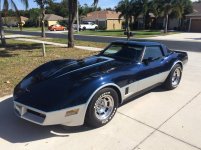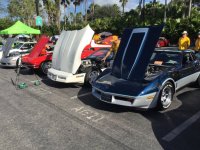
Over three seasons in the early '80s, the Corvette made its most significant advances in a generation. Paul Zazarine wonders why almost nobody remembers.
Photographs by the author.
Let's get something straight. Nineteen-eighty through 1982 Corvettes don't stand tall in the legend of America's Sports Car, and the reason is obvious. In terms of raw performance, they're all pretty stony. Even former Corvette chief engineer Dave McLellan, on whose watch these often-forgotten cars were constructed, dismisses the '81 in particular as "...slow as a Mazda Miata."
Yet we've not come to bury these cars but to praise them. First off, raw speed isn't everything—a fact that Corvette fans always conveniently forget until mileage, handling, or build quality guides their ire to another subject. Second, the challenges facing the model in this era, both from outside and inside GM, were so daunting that McClellan and friends weren't just tweaking another new car, they were trying to map out the model's survival. To put it mildly, the Corvettes of the late-'70s and early-'80s lived in interesting times.
Just as Congress had long warned Detroit, emissions, mileage, and safety regs kept growing increasingly tough every year in the 1970s. Politically, the plan had always been to give carmakers a generous decade or more to get where Americans thought that they should be. Nevertheless, GM steadfastly went with the laziest, most desultory path to compliance each year. As a result, foreign marques such as Honda, Porsche, BMW, and Toyota gained technology—and marketshare—every season, while GM saved a few R&D pennies at the cost of alienating once-loyal buyers and suppliers. For example, since GM resented having to certify every new drivetrain it wanted to offer, it refused to hire enough staff to do that job quickly. Engine and gearbox choices plummeted, leaving customers bewildered and suppliers saddled with unused capacity. The corporation also refused to fund serious fuel-injection research even after the need became obvious in the mid-'70s; later, it balked at buying that technology from others who hadn't shirked the responsibility.
This self-defeating attitude didn't leave programs like McClellan's very much room to maneuver. Even bit-players like Datsun and Volvo got full fuel injection by '75, yet at the start of the '80s the Corvette was still struggling to sort out a lower-cost hybrid that was part passive carburetor, part active computer, and all needless compromise.
Needless, mind you, but far from useless.
http://www.corvette-mag.com/art1/art1p1.html




 Dwayne
Dwayne 





